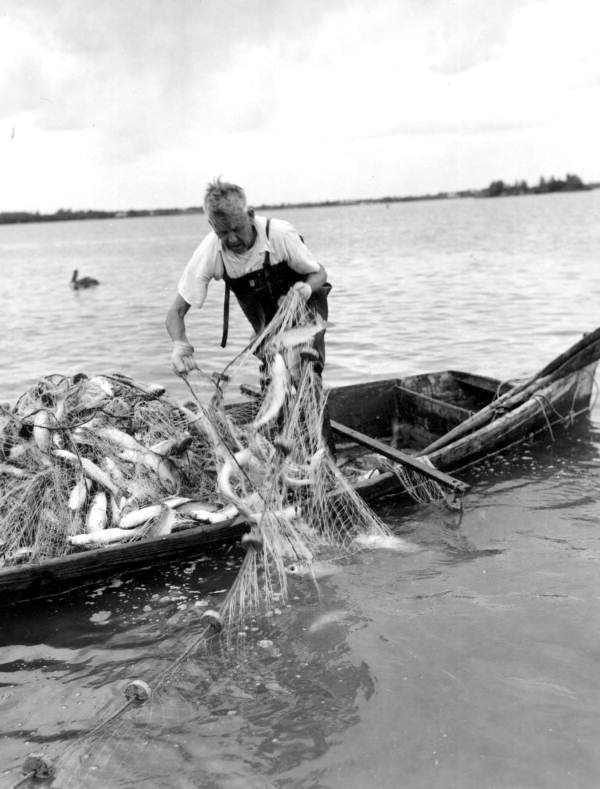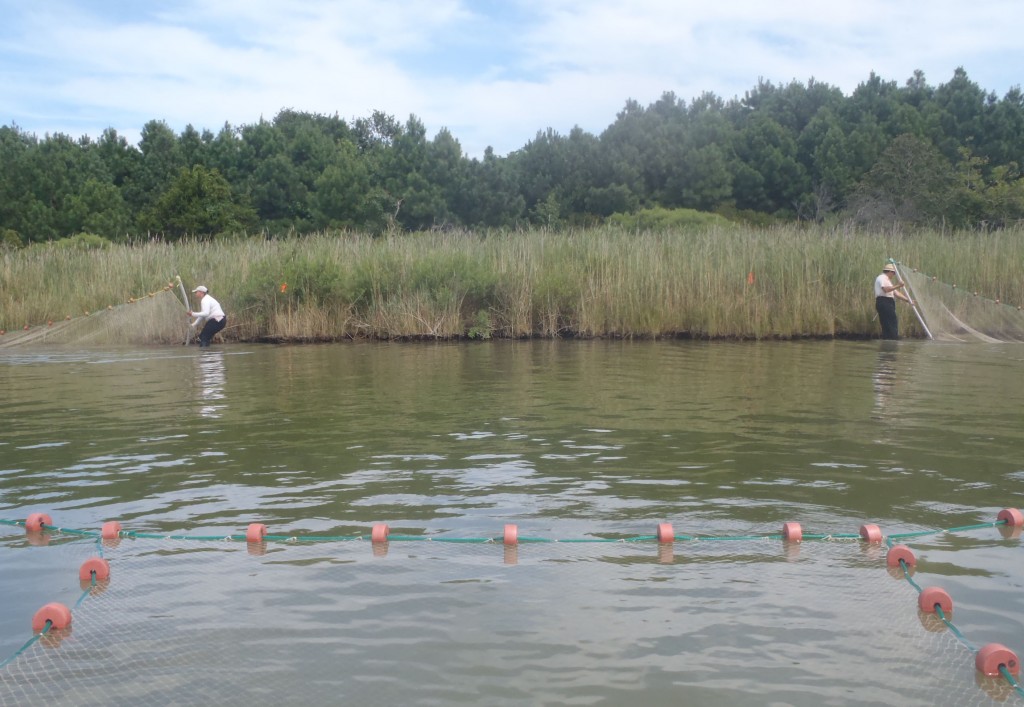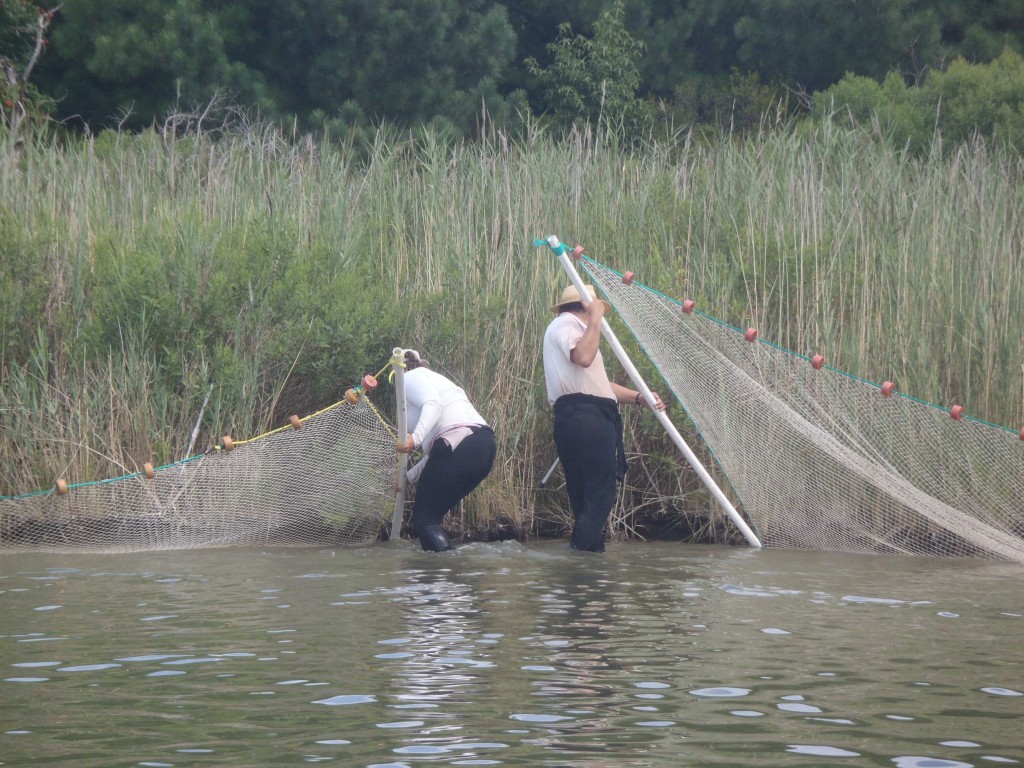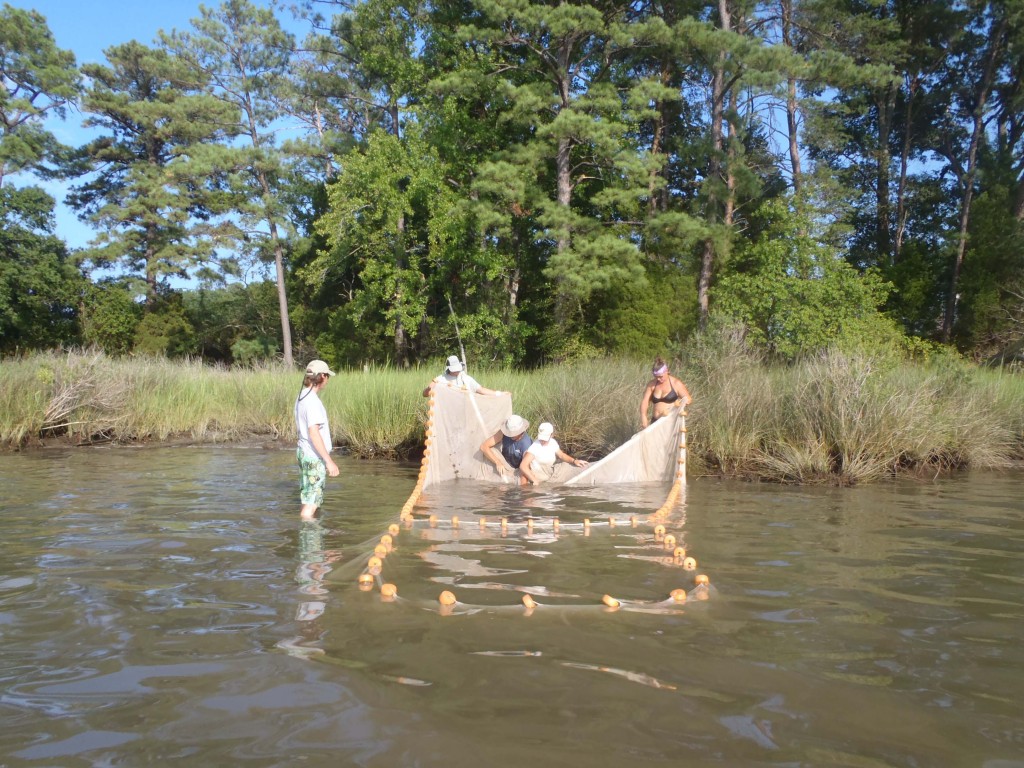by Heather Soulen
With its motor located near the bow (front) of the boat, the modern-day mullet skiff could have been a character in Lewis Carroll’s novel “Alice’s Adventures in Wonderland.” Similar to the unpunctual rabbit, vanishing cat and hookah smoking caterpillar, it seems illogical…or does it?
In the early 1900s, the mullet skiff was originally designed for use in the commercial mullet fishery of the south. Popular for its simple construction, flat-bottom dory style hull with vee entry, and rounded stern (back) design, the mullet skiff was ideal for operating in shallow waters while carrying heavy loads of fish. However, during Prohibition, entrepreneurs souped up their mullet skiffs with straight-8 engines (precursor V8s) to run rum from the Bahamas and Cuba to the states. Since then, many mullet skiffs have undergone less scandalous modifications and have evolved to have an outboard motor in a well near the bow.
Why place a motor here? For three important reasons: 1) It places the motor higher in the water for maneuvering in shallow water, 2) it leaves the stern (back) open to work a net, and 3) it eliminates the risk of net entanglement in the propeller. So, with “the wrong end in front,” the mullet skiff was the perfect choice for the near-shore predator study our field crew conducted this summer throughout the Chesapeake Bay.
Predators of the Not-So-Deep
From June through August, we trailered SERC’s 23-foot mullet skiff “Rhode Warrior,” loaded with two 200-foot seine nets to boat ramps around the Chesapeake Bay. I can’t tell you how many times commercial and recreational fishermen, kayakers, vacationing families and even dog walkers flashed puzzled looks, pointed fingers and hushed whispers to one another at these ramps. Some would ask “What’s with the motor?” While one of us would smile and explain, the four remaining crew members would load the skiff with lots of caffeine, food, water, fish sampling gear and the obligatory duct tape and cable ties every field ecologist should have. These are the tools we would need to help us describe predator populations in the shallow nearshore zone of tidal marshes.
This predator study was a small component of a larger study looking at how the introduced common reed (Phragmites australis australis) might make transient nekton (small fishes, crabs, shrimps and juveniles of larger organisms) vulnerable to predators (striped bass, white perch, spotted seatrout and blue crabs).
Read more: High and Dry in Chesapeake Bay.
Ready, Set…Jump!
So how do you set a 200-foot net using a mullet skiff? First, our boat captain scans the marsh for a suitable spot to back the stern to the marsh edge. A net runner uses ninja-like skills to quietly jump off the stern and secure one end of the net on shore while the captain speeds the skiff away, arcing around the marsh. As the skiff arcs back towards shore, the captain cranks the steering wheel and throttles down, causing the stern to skid towards shore like a stunt sequence in the movie “The Fast and The Furious.” The second net runner then jumps off and quickly runs the other end of the net to shore, entrapping the predators.
Timing and agility are important skills for the second net runner. Leaping off a moving boat into water that instantly stops your momentum while managing the unwieldy net is no easy feat—envision “walking” an 80-pound Golden Retriever that is determined to chase a squirrel! There have been some epic wipeouts, but all you can do is pop up and run as fast as you can to shore, splashing the entire way to prevent the fish from escaping. Once both net ends are secured at shore, we drag the ends along the marsh edge until we meet in the middle and trap the predators in the net. Then the fun begins! It takes all five of us to pull in our net, sometimes filled with hundreds of fish, jellyfish, blue crabs and the occasional cownose ray. We funnel the organisms into the bag of the seine where we quickly identify, measure and count every predator before release. During this process, it’s not uncommon for us to be punctured by fish spines, stung by jellyfish or pinched by a feisty blue crab or two!
An Ecologist’s Adventures in Wonderland
Just like any great adventure, there are blood, sweat and tears, and ecological research sometimes mirrors “Alice’s Adventures in Wonderland,” where the rules constantly change. “Curiouser and curiouser,” the resolute Alice was always trying to get a clearer picture and make sense of her environment. Ecologists, much like Alice, are driven in this same way, always trying to understand the ‘how’ and ‘why’ of our own ever-changing environment. We are often lured down the ecological rabbit hole, seeking answers to ecologically significant questions like how an introduced marsh grass, like Phragmites, might change predator-prey relationships in the Chesapeake Bay.







Great piece! I could picture this happening! Sounds like it takes great team-work.
How cool! I love the Wonderland references throughout. Looks like a nice day out on the marsh. Would love to see the blooper reel…